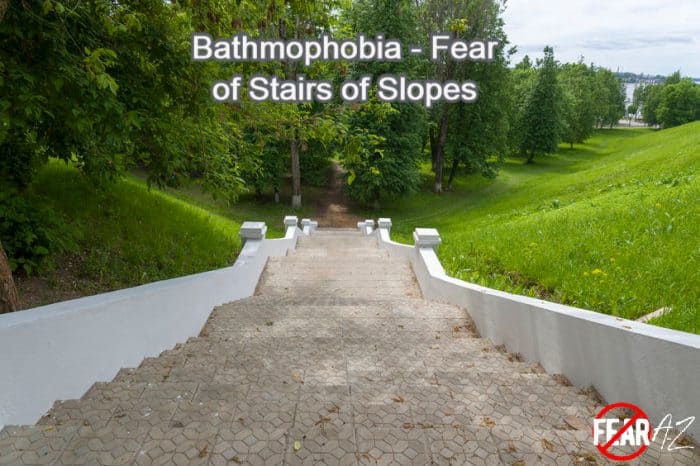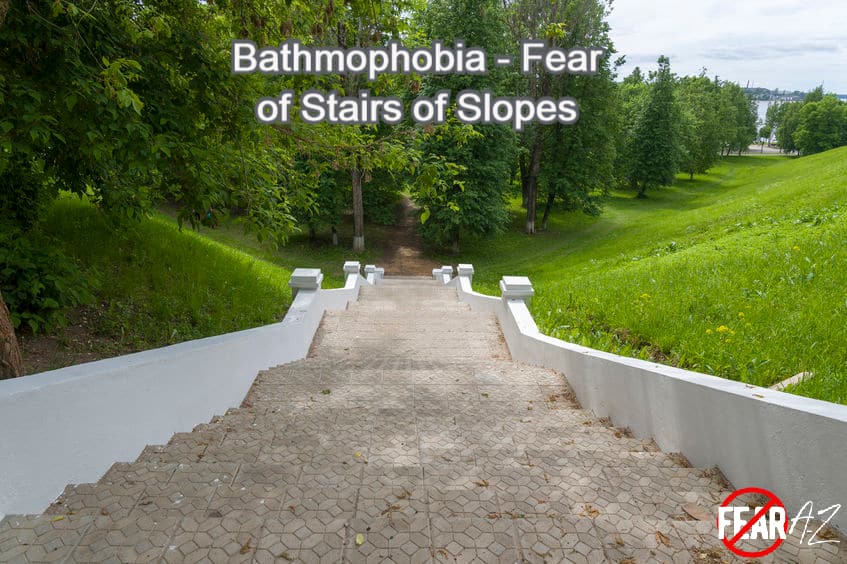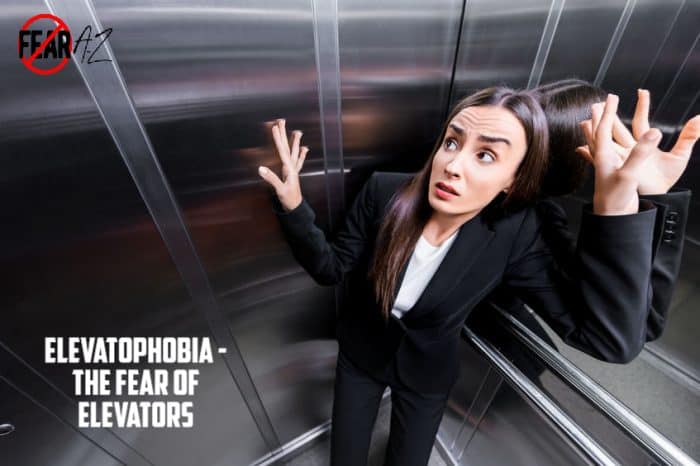Share This Article
The Excessive Fear of Stairs or Slopes
Do you tremble at the thought of climbing stairs? Are you more terrified of getting on the airport escalator than on a plane that flies thousands of feet in the air?
Have you ever put off replacing a broken lightbulb because of a fear of climbing ladders?
Have you seen someone fall down the stairs and hurt themselves? Or did you experience losing your footing on a slippery step? Maybe nothing has happened at all, but you still have a severe fear of falling down the stairs.
Perhaps you’re planning to move, but your fear of steep hills is keeping you from buying that dream home. Or maybe you want to put up holiday decorations but can’t because of a fear of ladders.
You feel your hands shaking, and you get an irresistible urge to run away. Your heart starts beating faster and your head swims.
You may feel embarrassed sharing your fears with someone. You’re afraid they will make fun of your stair anxiety.
What can you do about this overwhelming fear?

What Is Bathmophobia?
Bathmophobia is the extreme fear of stairs, ladders, hills, or any steep surface. Those with this phobia are deathly afraid of the possibility of falling while moving up or down a slope. Anytime you see or reach a height, you’re afraid you will lose your balance and hurt yourself.
Some have a fear of climbing stairs, which is called climacophobia. The difference is that they only feel afraid during the act of climbing. But with bathmophobia, the anxiety comes at the mere idea of climbing.
You are aware that this fear of hills or slopes is irrational, yet you still feel the tremors. And you can’t simply ignore your fear. It’s impossible to completely avoid stairs, ladders, or slopes in your daily life.
Telling yourself to stop being afraid is not the solution. But there are ways to manage this fear. Finding out why you feel this way and taking steps to overcome your fear of stairs or slopes will help you lead a happier life.
Everything You Need to Know about Bathmophobia
It’s reasonable to be cautious about falling off a ladder or down a flight of stairs. No one wants a sprain or a broken bone. But a phobia is more serious. It takes you over, and you lose control over how you react.
The National Institute of Mental Health reports that around 12.5 percent of Americans have experienced a phobia at some point in their life. It may have to do with genetics and brain chemistry. You are also more likely to develop a phobia if a close family member has dealt with phobia.
Symptoms of Bathmophobia
You may have experienced this deep fear a few times. Or, it could be so severe that you make plans to avoid going anywhere near stairs or escalators. Each individual has different symptoms when suffering from this phobia, making it challenging to diagnose.
The symptoms are either physical or mental/emotional.
Physical Symptoms
- Panic attacks
- Dizziness
- Prickly sensations like being poked with pins and needles
- Fast heart beat
- Aches in the body
- Dryness and stickiness in the mouth
- Sweating a lot
- Running out of breath
- Tired but not being able to fall asleep
Mental/Emotional Symptoms
- Constantly living in fear
- Going out of the way to avoid stairs and steep surfaces
- Fearing that someone you know will get hurt
- Inability to relax
- Inability to concentrate
- A short temper
- Feeling out of control
- Self-disappointment
Those who have bathmophobia could experience many of these symptoms, which could get worse the closer you are to the trigger.
How Do You Deal with Bathmophobia?
Imagine you need to evacuate from a burning apartment. The only way out is down a rickety fire escape. Can you save yourself?
Consider a less dramatic but more realistic example. You just got an amazing job offer, but your new office is on the second floor of a building with no elevators. Will your fear of escalators stop you from pursuing this opportunity?
Imagining yourself in such situations helps you realize what is more important to you. But before seeking professional help, see if you can help yourself first.
Face Your Fear
Every phobia is dealt with one step at a time. In this case, literally. You can start by going up a staircase with just a few steps. Then, slowly shift to a staircase that goes up one floor. Use the handrail for support. Or, if you have a friend, accept their help. If you can trust your friend, share your fears with them, ask them to walk with you.
Hold the Handrail
Most stairways have a guardrail or handrail that you can hold on to for support. Always keep a firm grip as you go up or down. If there isn’t one, keep your balance by putting your hand against the wall. Make sure the stairs are clear of any objects to avoid tripping. Be extra careful if the stairs seem to have missing or loose steps, as this may increase your nervousness.
Write It Down
Write down how you feel after each attempt. Each experience will get you closer to removing your phobia. If you still feel anxious, try talking to someone you trust. Ask your family physician if they could suggest a therapist who has experience in treating phobias.
Getting Professional Help
A therapist who specializes in phobias can better understand and help you, step by step, so you can finally take those stairs. Phobias like bathmophobia are more serious and require help before it completely controls your life.
One of the therapies used in bathmophobia treatment is cognitive behavioral therapy, which teaches you to replace irrational thoughts and negative emotions with more logical and pleasant ones. You are taught how to calm down whenever you feel anxiety. This type of therapy uses the relationship between how you think and how you feel and your behavior in response to it.
Cognitive behavioral therapy uses systematic desensitization, which means that you gradually face your fears, so you get used to the idea of them. You then get used to climbing up and down stairs, walking uphill, or taking an escalator.
Hypnotherapy is also used to treat or manage bathmophobia. This method helps you find and use your inner strength to fight the issues that gave rise to your phobia. Hypnotherapy helps you to help yourself.
Hypnoanalysis is another approach that many therapists rely on to remove the root causes of many mental or emotional issues.
How to Avoid Bathmophobia
It may take weeks, months, even years to learn to overcome or better manage your phobia. Meanwhile, don’t just depend on professional treatment alone. You need to help yourself too. Learning to meditate in stressful situations reduces the impact of anxiety. Or practice deep breathing to help chase away the jitters or dizziness.
In Conclusion
Don’t let phobias stop you from doing the things in life you dream of doing. Once you decide to conquer your bathmophobia, there’ll be no stopping you from reaching the top. Just take it one step at a time.




